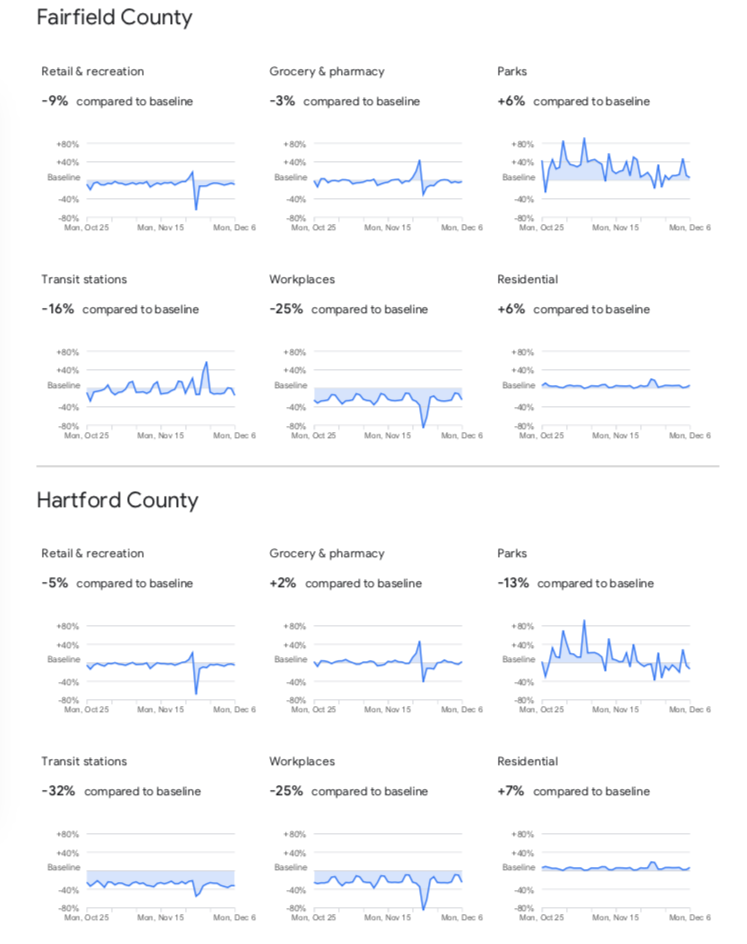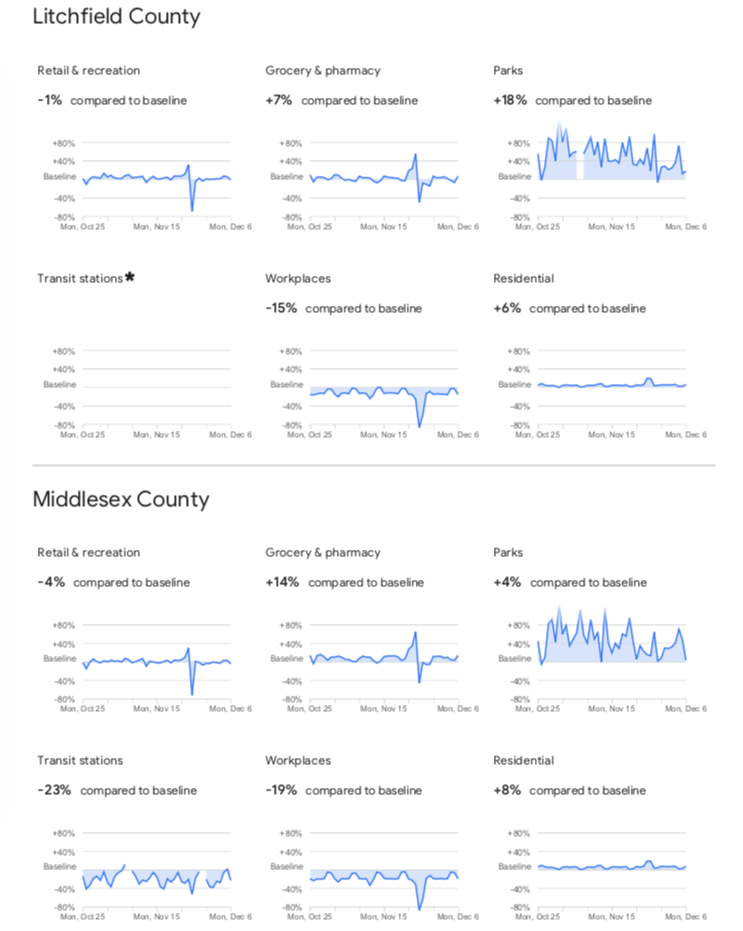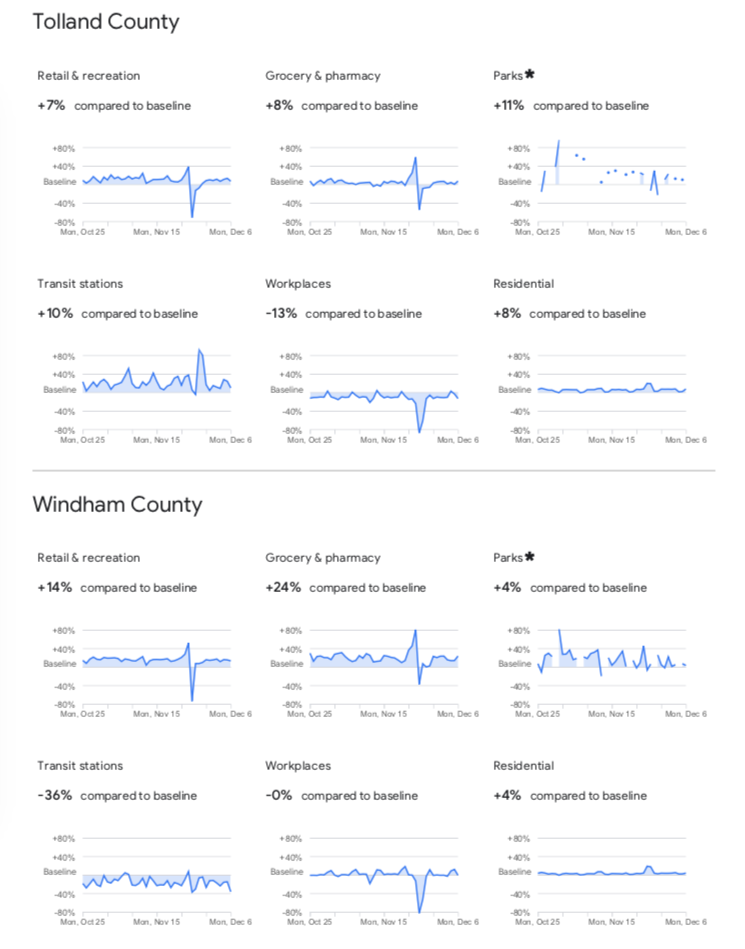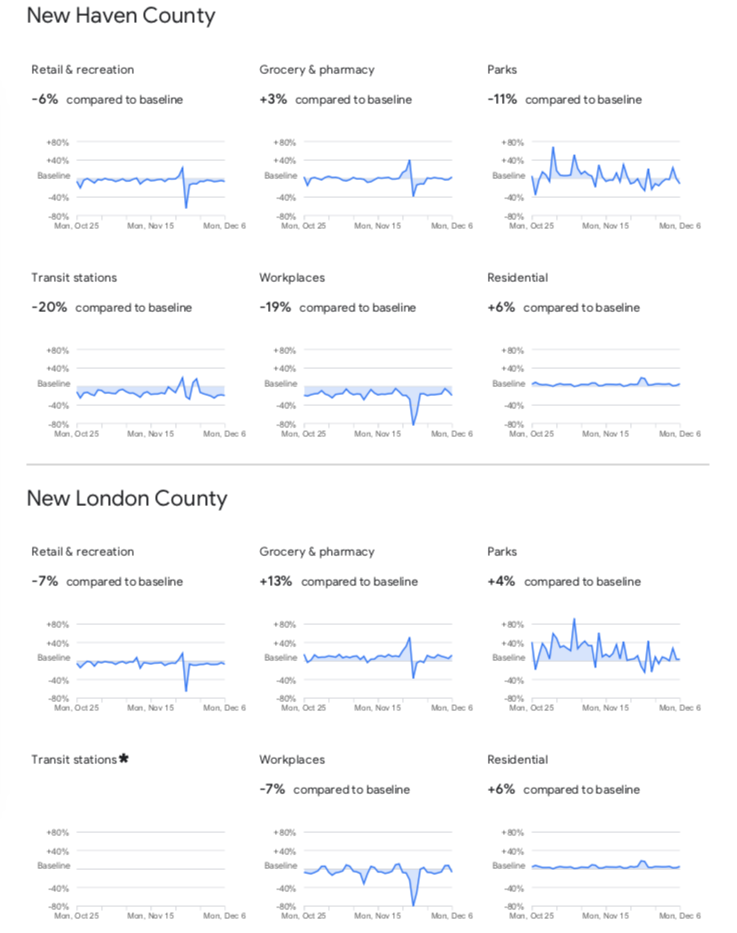Has the recent COVID-19 spike in Connecticut and the threat of Omicron added more caution to your day-to-day behavior, even affecting where you go?
The latest Google Mobility Report, released Wednesday, reveals more people still staying home, a big workplace dip and an even bigger avoidance of transit stations compared to a pre-pandemic baseline.
Omicron, meanwhile, gets the most COVID-19 attention even though Delta remains the dominant, and most dangerous, variant. It’s still uncertain if Omicron will eventually surpass Delta as the most dominant variant.
“Is it more transmissible but less dangerous (than Delta and previous variants)?” says Dr. Ulysses Wu, Hartford HealthCare’s System Director of Infection Disease and Chief Epidemiologist. “Or does it morph into the common cold? This is the best-case scenario, that this is the natural evolution of a coronavirus.”
The Community Mobility Report, prepared for public health officials, uses information from Google Maps and other sources to track movement. Google uses as a pre-COVID baseline the median value for the five-week period from Jan 3–Feb 6, 2020.
Here are the latest state numbers as of Dec. 6, followed by county-by-county results:
-
Residential: Up 6 percent.
-
Workplace: Down 20 percent.
-
Transit stations: Down 24 percent.
-
Parks: DowN 5 Percent.
-
Grocery and pharmacy: Up 5 Percent.
-
Retail and recreation (includes restaurants, shopping centers, theme parks, libraries and movie theaters): Down 5 percent.
Fairfield and Hartford Counties

Litchfield and Middlesex Counties

Tolland and Windham Counties

New Haven and New London Counties
